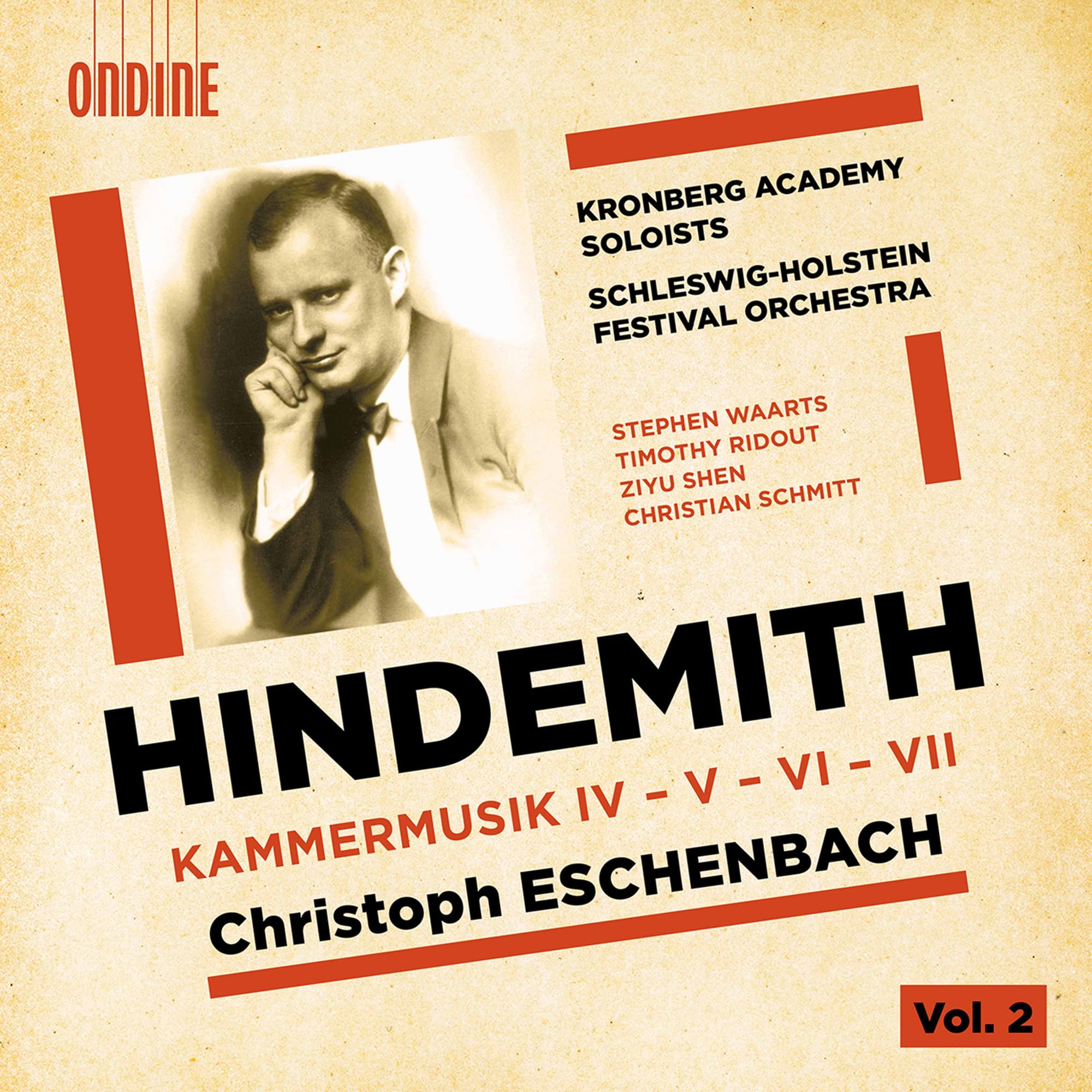Hindemith from Christoph Eschenbach
There is something about the enthusiasm of hese performances that is so perfectly invigorating

Paul Hindemith gets a bit of a bad rap, one reason we've tried to support fine releases of his music here on Classical Explorer. There are musicians behind him of course. One is violinist/violist Roman Mints, who I interviewed for Classical Music magazine once on this very subject, and whom we featured in this post, where he performs the complete works for violin and piano plus the sonata for viola d'amore and piano with the fine pianist, Alexander Kobrin - the post is shared with a Hindemith disc on Neos of piano music performed by Andreas Skouras; obviously, the Symphony Mathis der Male had to crop up, and here it is on Naxos from Marin Alsop and her Vienna forces, coupled with Sancta Susanna and the Nüsch-Nüschi-Tänze (what a great title from someone who ostensibly doesn't have a sense of humour!). Not forgetting, of course, a post on the complete opera Mathis der Maler in a DVD/Bluray of a Vienna performance conducted by Bertrand de Billy.
Some performers have a special feel for Hindemith that reminds us he's not just a composer of sonatas for solo instruments with almost unplayable piano parts. Conductor and pianist Christoph Eschenbach is one such musician. To explain the musicians used here: the Kronberg Academy Soloists are the strings; the Schleswig-Holsetain Festival Orchestra is wind and percussion. There are four soloists, all fine, as we shall see and hear.
We mentions viola d'amore before. We have a Viola Concerto here: Kammermusik No. 5 (Op. 36/4) of 1927, labelled "Concerto for viola and large chamber orchestra". There are no iolinsin the scoring, which of course puts the viola in the upper reaches of the string presence. The brass section includes horn, two trumpets, two trombones and bass tuba, which one might have thought might overpower the soloist, Timothy Ridout. But no, he is rock solid in the Neo-Classical rhythms and demeanour of the first movement (and the orchestra is magnificently precise in its accentuation), and finely expressive in the longest movement (of four), the Langsam. The contrast of the two speaks volumes about Hindemth's expressive range, and Ridout is supremely expressive. The "Scherzo" (Mäßig Schnell) is playful as only Hindemith knows how. The finale has a sort of blunted festivity about it, with brass acting as Hindemith's equivalent of Ives' marching bands (Hindemith actually parodies Adolf Scherzer's Bavarian parade march). This piece was premiered by Hindemith himself in Berlin in November 1927, conducted by one Otto Klemperer. Here's Ridout and Eschenbach (one YouTube video, with the movement timings given below, and with scrolling score):
I. Schnelle Halbe 0:02 II. Langsam 4:21 III. Mäßig schnell 12:16 IV. Variante eines Militärmarsches 15:34
... and here, as a point of interest, is that march (Bayerische Defiliermarsch) by Adolf Scherzer (1815-64):
The disc actually starts with the Kammermusik No. 4, Op. 36/3 of two years earlier (1925) for solo violin and large orchestra, a five movement Violin Concerto. Again there are no violins (the total number of players is 24), and the sound is given an edge by two piccolos and an E flat clarinet the small one). A "cornet à piston" (an "end-blown lip-reed aerophone outfitted with piston valves and interchangeable crooks that make it a fully chromatic instrument that can be pitched in a number of different keys") as opposed to trumpet dominates the orchestra before the violin's entrance. Click this link to find out more, see some photos and hear some musical extracts regarding that instrument.
The five movements are divided into three "parts": "Signal" first movement and the second; "Nachstück" (Night Piece) as the central panel (the this movement) and then fourth and fifth movements (both fast: "Lebhaft" - lively - followed by "As fast as possible"). You can certainly hear the "Signal" (Fanfare) in the first movement, in which the soloist is absent. The second movement, "Sehr Lebhaft" (Very lively) is virtuoso in nature. The soloist here, Stephen Waarts, is new to me and is superb, both in the long melodies and in the more hair-raising passages:
Unrest characterises the centrally positioned “Nachtstück”; the spiky fourth features glittering woodwind and the finale is a positive whirlwind, its difficulties transcended by Waarts. Eschenbach's young players are completely on the ball here, and the ending is light as a soufflé:
The viola d'amore player here in Kammermusik No. 6 is Ziyu Shen. The sound is fascinating: sometimes glassy, sometimes super-warm. Witten in the summer of 1927, the piece is heard as one continuous movement split into five constituent parts. Solo trumpet again plays an important part, again. The central Langsam lies slap-bang at its heart and is, indeed, filled with heart:
Shen's cadenza in teh finale is miraculously expressive. His viola d'amore really speaks, then naturally enters into dialogue with its instrumental colleagues:
Listen to the finale ("Lebhaft" - lively - and it really is, Eschenbach's players wonderfully cheeky,
Finally the Kammermusik No. 7 for organ and chamber orchestra, again from 1927. Christian Schmitt is the silvery-toned soloist here. "Nicht zu schnell" - not too fast! - counsels Hindemith in the first movement, and Eschenbach and Schmitt take heed, allowing every not to count, crisp and incisive:
This piece was commissioned by South West German Radio (then known as "Frankfurter Sender," for the inauguration of a new organ in its broadcasting hall (Hindemith's brother-in-law, Hans Flesch, was artistic director at the radio station). Hindemith uses low strings only to reinforce the baselines of the wind, giving the whole a rather objective feel. The slow movement is beautiful, the finale breathlessly helter-skelter, with teh organ's first entrance an explosion of angular contrapuntal joy:
The competition here is principally Riccardo Chailly and the Royal Concertgebouw Orchestra on Decca: characteristically clean-cut. But there is something about the enthusiasm of these performances that is so perfectly invigorating ...
Available at this Amazon link;
